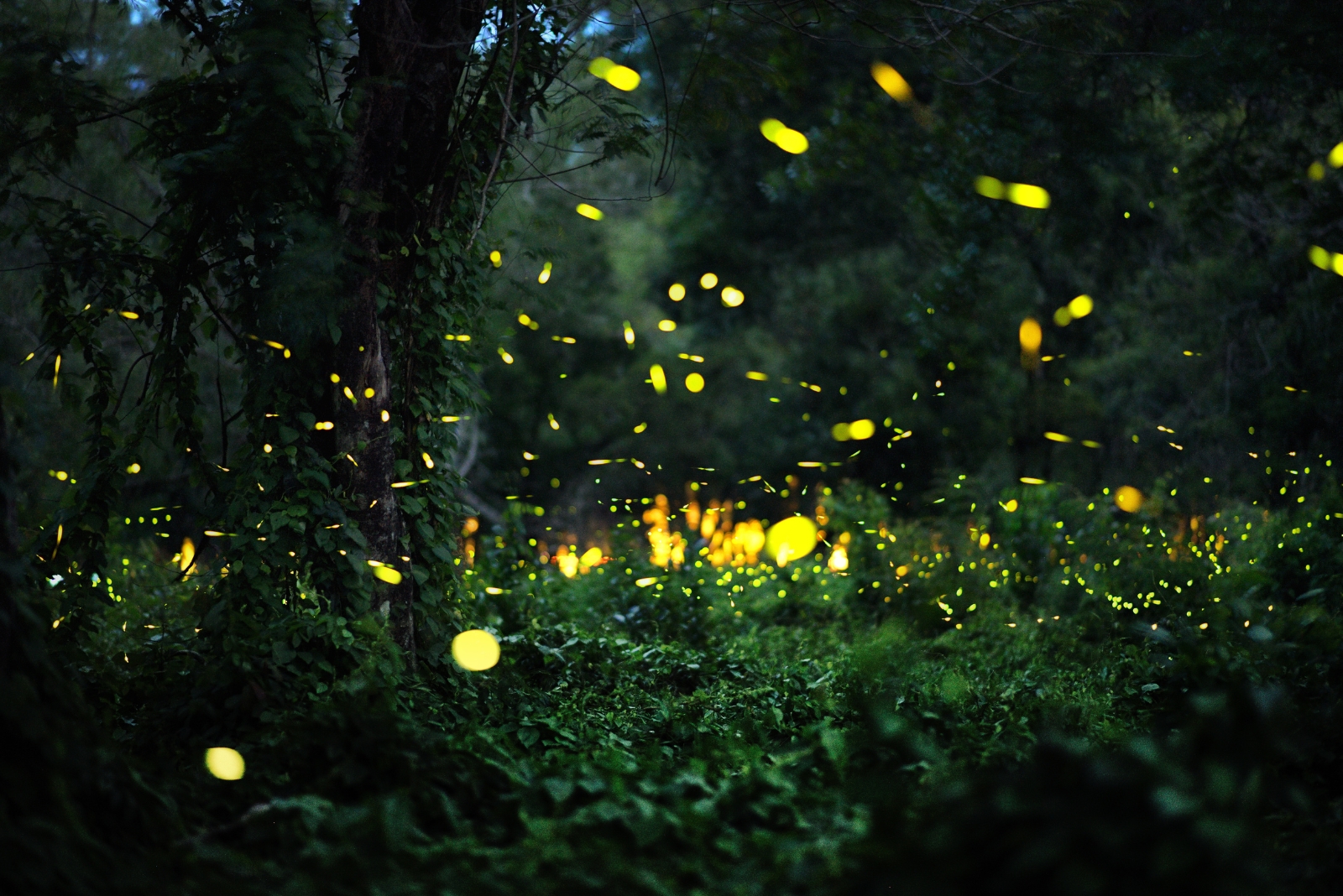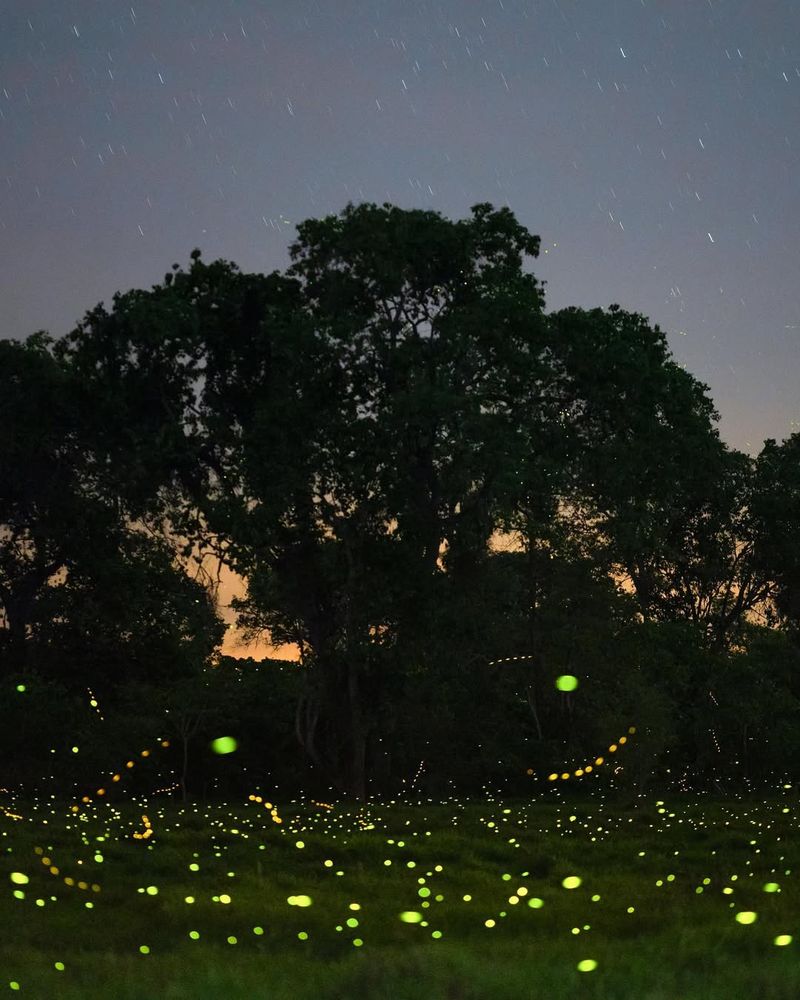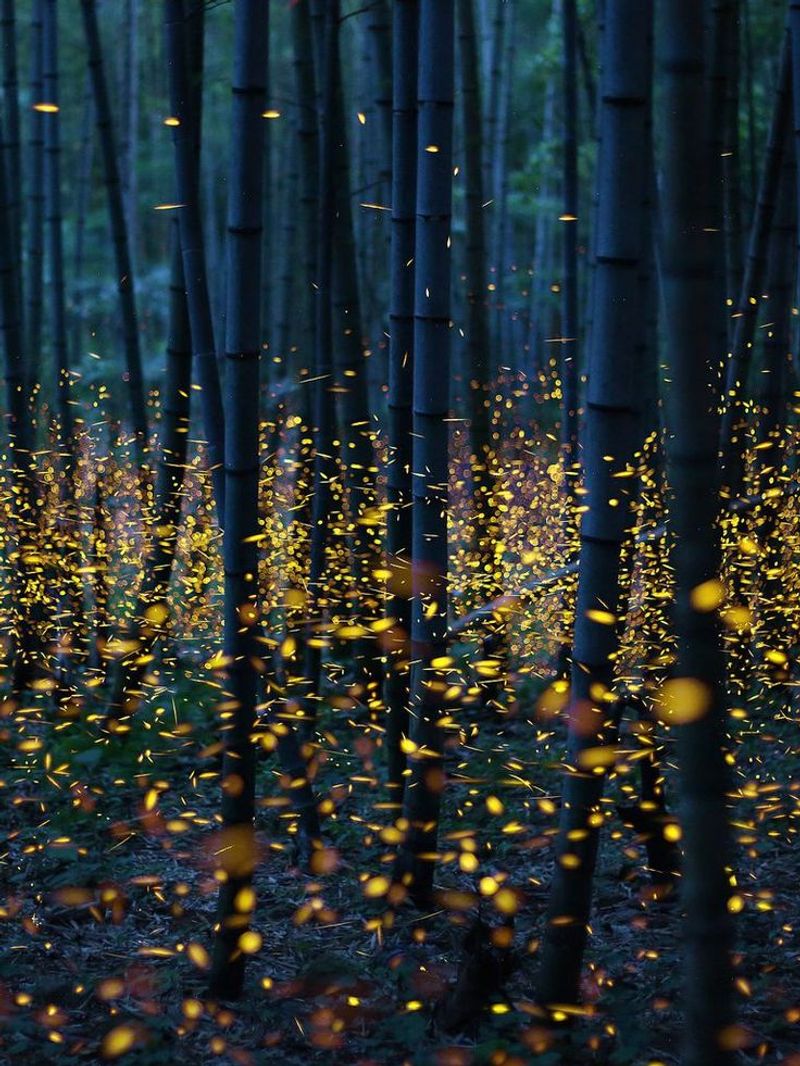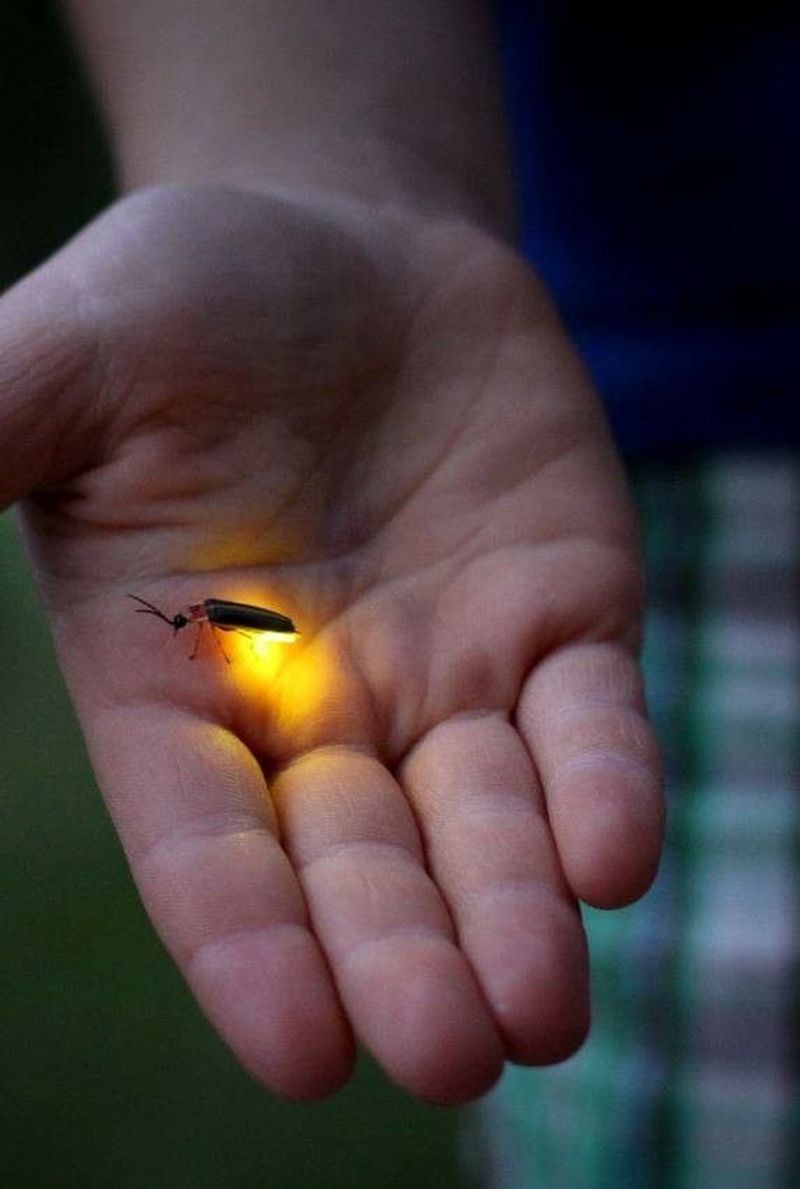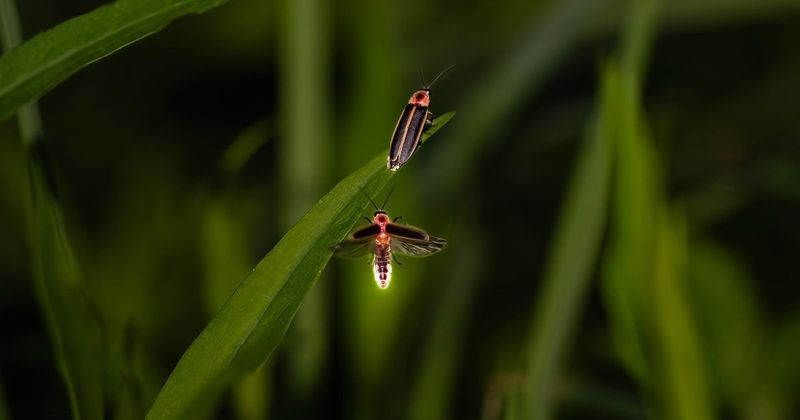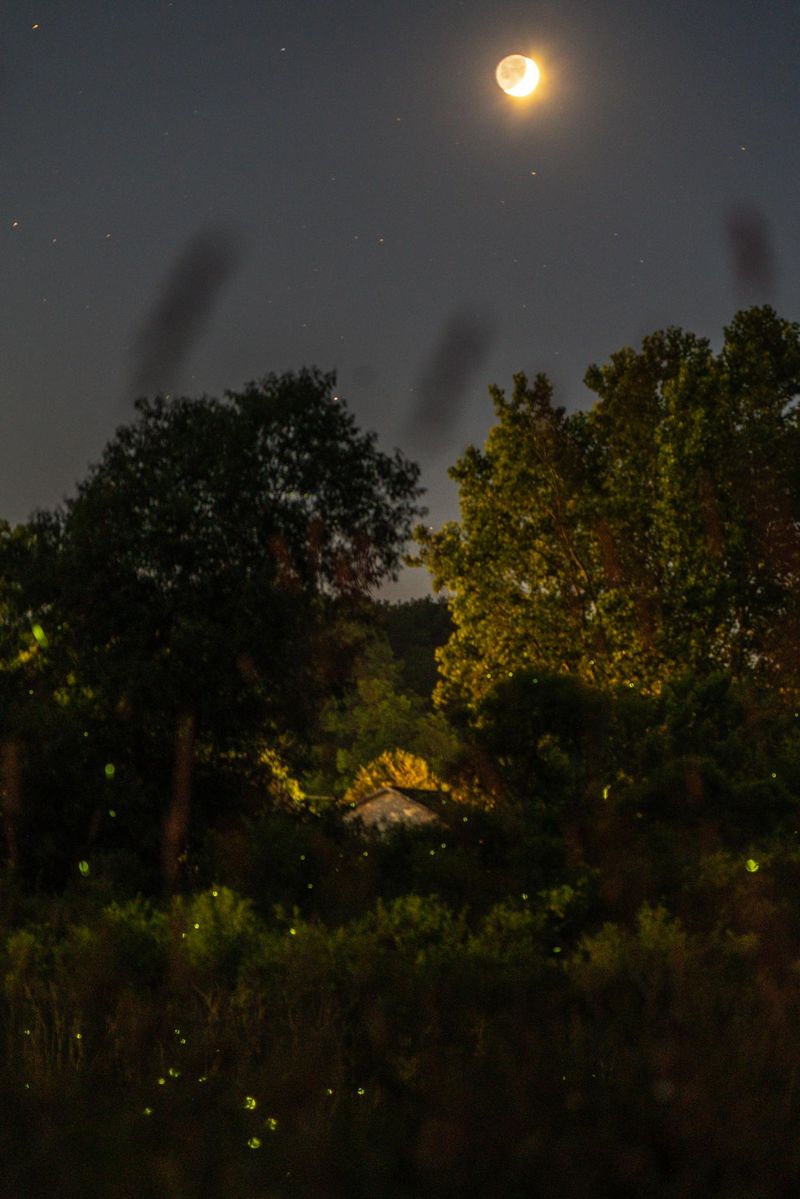Fireflies in Utah are becoming harder to spot, and it’s not just your imagination. I’ve noticed fewer glowing around my yard lately, and it made me wonder what’s really behind their decline.
From pollution to habitat changes, several factors are working against them. Understanding the reasons gives us a chance to protect one of nature’s most fascinating insects before they fade even more.
1. Light Pollution Disrupts Their Communication
Bright streetlights and outdoor lamps are making it tough for fireflies to find each other in Utah. Male fireflies flash specific light patterns to attract females, but all the artificial lighting confuses their signals.
Cities and suburbs across Utah glow so brightly at night that fireflies cannot see each other’s bioluminescent messages. When fireflies cannot communicate properly, they struggle to mate and produce the next generation.
Turning off unnecessary outdoor lights during summer evenings can help these beetles thrive again.
2. Habitat Loss From Urban Development
As Utah’s population grows, more homes and buildings replace the wild spaces fireflies need to survive. Grassy meadows, marshes, and wooded areas where firefly larvae develop are disappearing fast.
Firefly babies, called larvae, live in moist soil and leaf litter for up to two years before becoming adults. When construction crews clear land for new neighborhoods, shopping centers, and roads, they destroy these critical habitats.
Without safe places to grow, firefly populations across Utah continue shrinking year after year.
3. Pesticide Use in Yards and Gardens
Chemical pesticides that kill mosquitoes and other bugs also harm fireflies throughout Utah neighborhoods. Many homeowners do not realize that spraying their lawns eliminates beneficial insects too.
Firefly larvae eat snails, slugs, and worms in the soil, but pesticides poison their food sources and the larvae themselves. Even small amounts of chemicals can be deadly to these delicate creatures.
Choosing natural pest control methods helps protect fireflies while keeping your Utah yard healthy and beautiful for everyone to enjoy.
4. Climate Change Affects Moisture Levels
Did you know fireflies need damp environments to complete their life cycle? Climate change is making Utah drier, which creates serious problems for these moisture-loving insects.
Firefly larvae require moist soil to hunt for prey and develop properly. When droughts hit Utah and temperatures rise, the ground becomes too dry for larvae to survive.
Streams and wetlands are also shrinking, eliminating the humid microhabitats adult fireflies prefer. Without adequate moisture, firefly populations cannot bounce back even when other conditions improve across the state.
5. Reduced Native Vegetation
Manicured lawns with short grass have replaced wild, native plants that fireflies depend on throughout Utah. Tall grasses, wildflowers, and native shrubs provide essential shelter and hunting grounds.
Fireflies rest on plant stems during the day and search for mates among vegetation at night. When people replace natural landscaping with tidy, uniform grass, they eliminate the diverse plant life fireflies need.
Planting native Utah species in your yard creates welcoming spaces where fireflies can hide, feed, and reproduce successfully during their short adult lives.
6. Water Source Reduction
Fireflies love hanging out near ponds, streams, and other water sources across Utah, but many of these areas are vanishing. Water diversions for agriculture and development drain the wetlands fireflies call home.
Female fireflies often lay their eggs in moist areas near water where larvae can find plenty of food. When Utah’s natural water sources dry up or get paved over, fireflies lose their breeding grounds.
Protecting existing wetlands and creating backyard water features can provide crucial habitat for struggling firefly populations statewide.
7. Artificial Grass and Hardscaping Trends
Artificial turf and rock landscaping are becoming super popular in Utah yards, but these features are terrible for fireflies. Fake grass and gravel provide zero habitat for insects that need real soil and plants.
Firefly larvae cannot burrow into artificial surfaces or find the worms and snails they eat for survival. Hardscaping also prevents moisture from soaking into the ground, creating bone-dry conditions.
While low-maintenance landscaping seems convenient, it eliminates the natural ecosystems that support fireflies and countless other beneficial creatures throughout Utah neighborhoods.

